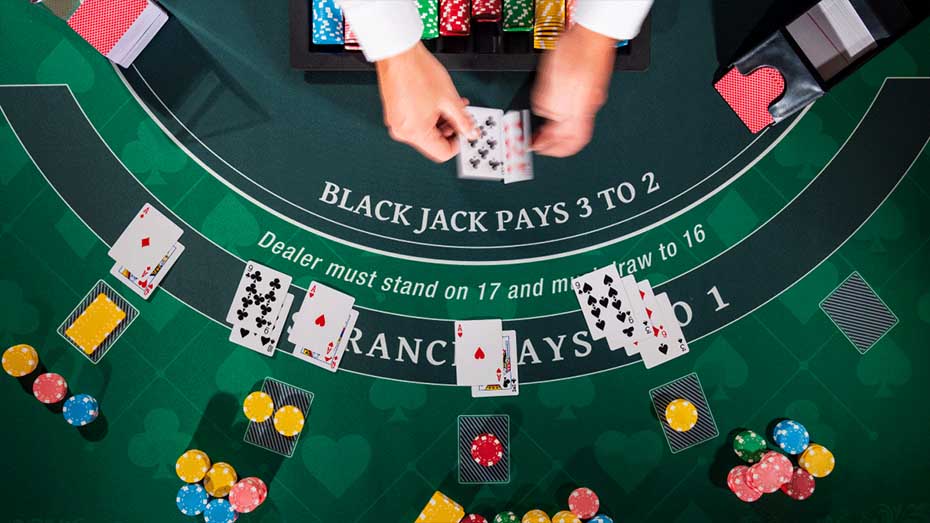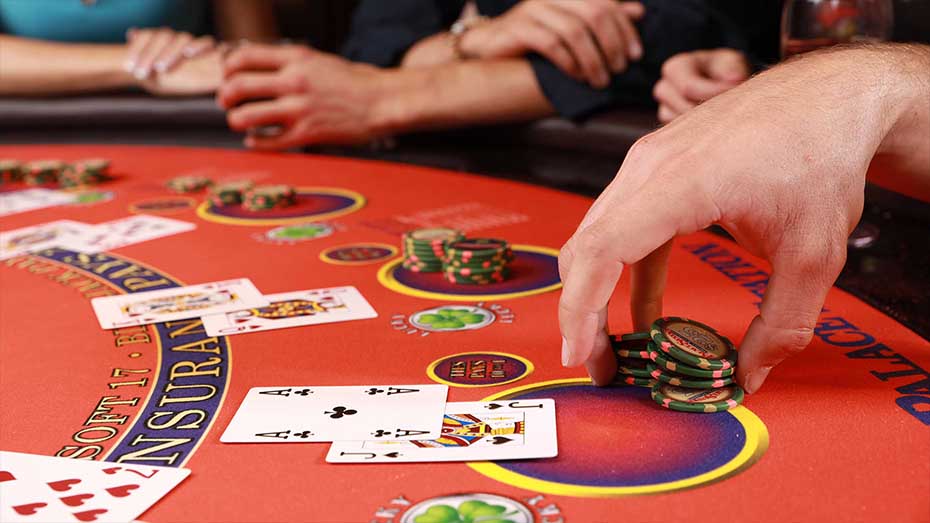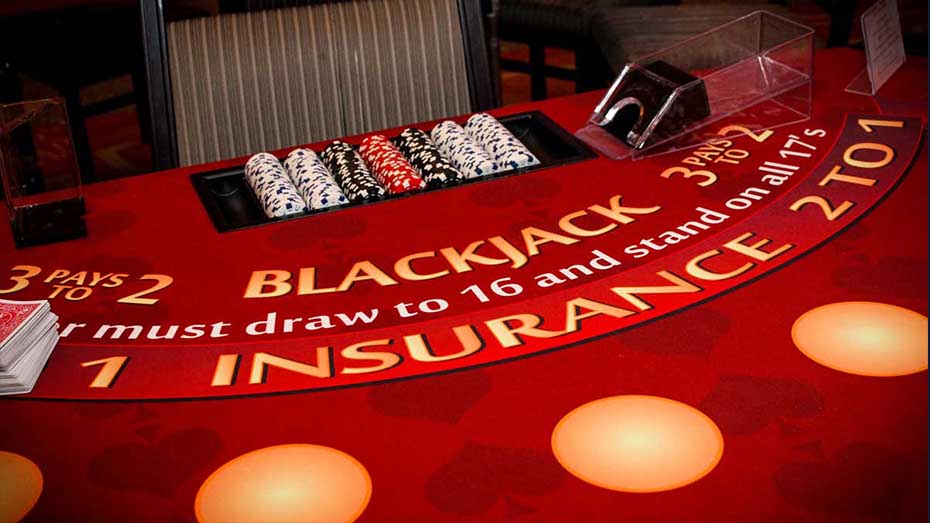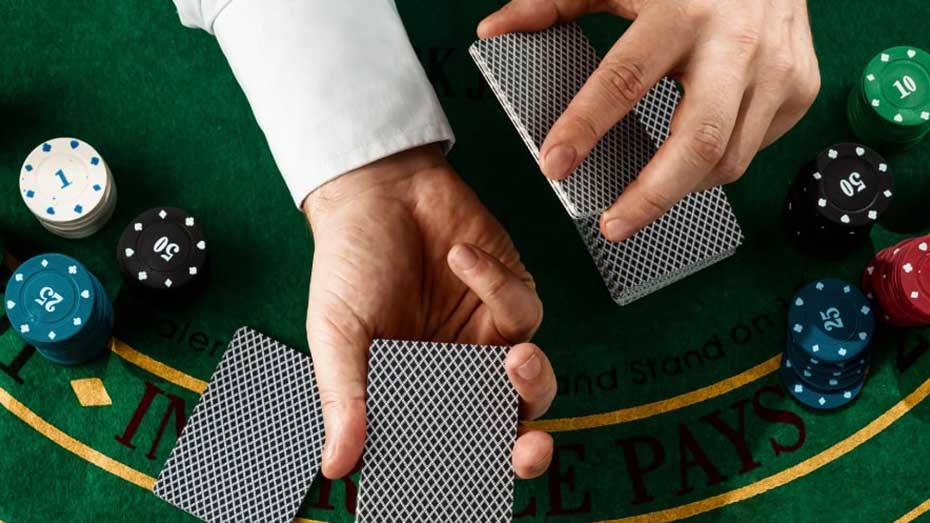

Embark on a journey into the captivating world of blackjack, a globally cherished card game that unfolds its thrill in the vibrant atmosphere of casinos. This game of skill is an artful pursuit, with the primary objective being to outmaneuver the dealer’s hand without surpassing the elusive score of 21. In this comprehensive guide, 24hscore will unravel the rules and offer valuable tips to enhance your prowess in playing blackjack masterfully.
Understanding Card Values in Blackjack
The foundation of blackjack lies in comprehending the values assigned to each card. Cards 2 through 10 maintain their face values, while the Jack, Queen, and King cards hold a consistent value of 10. The versatile aces can be valued at either 1 or 11, depending on the strategic advantage for the hand. A pinnacle achievement in blackjack is the coveted combination of an Ace and a face card, creating a winning hand with a value of precisely 21.
Whether the cards share the same suit or diverge into different suits becomes inconsequential. Let’s delve into crucial blackjack values that elucidate the game’s intricacies, empowering you to increase your chances of emerging victorious.
Mastering the Player Hand
At the heart of the game lies the primary goal of defeating the dealer at the conclusion of each round. Employing an optimal strategy involves carefully collecting cards until the total hovers near, but does not exceed, 21. An alternative path to victory emerges when the dealer surpasses 21, resulting in a bust.
It’s imperative to grasp the nuances of the two-way over-21-figure cut rule. Exceeding these limitations leads to defeat, emphasizing the need to navigate the delicate balance between risk and reward.
Navigating Splits
For the astute blackjack player, the possibility of a split arises when dealt two cards of identical value. Opting for a split introduces additional strategic options, albeit at an increased cost, as the initial wager extends to cover two hands rather than one.
Unveiling Soft Hands
Enter the realm of “soft hands,” characterized by the inclusion of an ace in the card combination. Examples include an ace paired with a nine, four, or a combination like ace-four-three. Soft hands offer a strategic advantage, as the inclusion of an ace ensures that an additional hit cannot lead to a bust. Leveraging soft hands provides a higher probability of securing victory against the blackjack dealer.
Decoding Hard Hands
In contrast, “hard hands” lack a fluctuating ace value. If an ace in the hand holds a consistent value of one point, it constitutes a challenging hand. Examples of hard hands include combinations like ace-eight-five, ace-jack-three, ace-six-five, ace-ten-seven, and a straightforward ten and seven.
Embark on your blackjack adventure armed with these strategic insights, where each hand unfolds as a nuanced pursuit of victory. The delicate dance between soft and hard hands adds a layer of complexity to the game, elevating your blackjack experience to new heights.


Embracing House Rules
In the realm of blackjack, house rules stand as the guardians of the house’s advantage, ensuring a consistent and error-free game for the dealer. Your competition is not merely the deck of cards but the gaming site itself, and the dealer becomes the mediator between players and the house. The dealer distributes cards from left to right, revealing one card face up to each player and concluding with a face-down card for the house. This sets the stage for the strategic exchange between players and the house.
Joining the Table and Initial Deal
As you step into the blackjack tableau, you become an integral part of the gameplay. The initial deal unfolds with each player receiving two cards, both facing up, while the dealer is dealt two cards—one facing up and the other concealed from view.
Deciding to Hit or Stand
The pivotal moments arrive as players are confronted with the decision to “Hit” or “Stand.” This choice, made after the initial two cards, opens a realm of possibilities. A strategic player considers not only their hand but also the dealer’s visible card and the collective dynamics at the table. Opting to “Stand” typically occurs when a player’s card point value falls between 16 and 21.
Dealer’s Actions on a Soft 17
The dealer’s role is to draw cards until they reach at least 17 but not exceed 21 if starting with a score below 17. A crucial juncture unfolds as players and the dealer reveal their hands, setting the stage for the ultimate showdown.
Evaluating Outcomes
The climax of each round lies in comparing the scores of players and the dealer. A tie results in a push, returning the initial wager to the player. A victorious outcome materializes if the dealer busts or surpasses 21, rewarding players with a 1:1 payout. A player holding blackjack enjoys a potential payout of 3:2 or even 2:1.
Navigating Stand and Hit Choices
The strategic choices of “Stand” and “Hit” guide the course of the game. Opting to “Stand” signals the intent to proceed with the current hand, while “Hit” indicates the desire for an additional card. Victory hinges on maintaining a card count fewer than or equal to 21.
Unveiling Potential Outcomes
The blackjack narrative unfolds with five potential results:
- Bets are returned in a tie, with both player and dealer sharing identical scores.
- Bust (going over 21) results in a loss.
- Player loses if they reach 21 or less, and the dealer avoids busting.
- Victory is claimed if the player stays within 21, and the dealer busts.
- Winning occurs by surpassing the dealer’s score while maintaining a total of 21 or less.
Embark on your blackjack journey, navigating the strategic nuances and embracing the suspenseful outcomes that define each round.


Dealer Reveals Their Card
Whenever the player at the table decides what to do, the dealer will reveal their face-down card. You compete with the casino, typically represented by the dealer, when you play the house. From left to right, the dealer hands one card face up to each player, with the final card going to the house’s hand, which is dealt face down. Each player will then get one card facing up, followed by the house.
The blackjack regulations state that after the initial deal, the dealer will sequentially ask each player if they require one or more cards. As a player, you can request one or more cards (referred to as a “hit”) until you reach 21 (when you “bust”) or you believe you have the best hand conceivable.
You “stay” or “stand” once you have all the cards you require, which tells the dealer that you don’t need any more. The next player decides whether to hit or stand at that point.
The dealer exposes his or her own card whenever every player has finished their hands or gone bust. The blackjack regulations at the table will determine whether the dealer will hit or stand based on the cards in his or her hand.
Hand Value Result
As a result of the move you just made, you’ll probably have a new hand value. You’ll remain in the game if your hand is valued at 21 or anything less.
Winner – Closer to 21
You bust the dealer and win if your hand is closer to 21 than the dealer’s is. The dealer wins if their score is equal to or closer to 21 than any other player’s score.
When you win, the dealer will give you your money. Depending on the sort of bet you made, your payoff will vary. View the extra payout guidelines below:
Regular wins pay 1:1
When your card values are closer to 21 than the dealer’s, this situation exists.
Blackjack wins pay 3:2
This occurs when your cards total 21.
16 and below
On any hand worth 16 cards or less, the dealer must hit.
Split
Divide your two-card hand into two independent hands for an additional chance to defeat the dealer. If you’ve got two cards of identical value, this is an option.
Double Down
Players have the option to double their wager in the middle of the hand, but you will only receive one card and will not be able to choose another. Some casinos let you double down on whatever other than a ten or eleven, even if it’s not a good idea. Some online casinos, however, restrict this option.


Q&A
If you have two cards in your hand that are of equal value, you can split them. You can decide to double your bet by splitting the hand into two new hands.
It’s worth studying some blackjack strategy guidelines to give yourself the best odds of succeeding. We’ll walk you through a few in-game scenarios in our strategy guide, and we’ll also give you tips on card counting and when to adjust your bets. Although it isn’t completely infallible, it will unquestionably increase your chances in the fantastic game of blackjack.
The blackjack rules are straightforward. Cards are dealt to you, and they each have a face value. You must obtain a hand that comes as close to 21 as you can while staying under it. If you’re over 21, you’re out.
Conclusion
The simplicity of the rules and lack of difficulty in the gameplay make blackjack one of the best games to learn. Understanding the values of the blackjack cards is the only game-changer. If you frequently refer to the blackjack card value chart with the potential outcomes of two starting cards, your gameplay will improve. The dealer shuffles the cards, so occasionally picking low-value cards is unavoidable. However, you can experiment with your odds to score more points overall and win the game.





